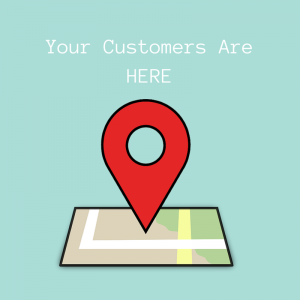— January 17, 2018

Alexas_Fotos / Pixabay
What does it mean to provide a great employee experience, and how do you go about improving yours?
Simply put, a great employee experience is engaging, productive, fulfilling, and enjoyable. As straightforward as that may seem, many business and HR leaders today struggle to deliver a consistently positive experience that meets those goals.
A recent Deloitte Insights report showed that 80 percent of executives considered employee experience either very important (42 percent) or important (38 percent), yet only 22 percent reported that their organizations did an excellent job of creating a differentiated employee experience.
When compared with other areas to allocate time and resources, it may seem as though an outstanding employee experience is a “nice to have,” but it’s more than that. An investment in providing an amazing employee experience is a clear and visible indication that your organization is committed to employees, and providing that kind of environment can go a long way toward inspiring long-term engagement, retention, and productivity.
The most skilled employee experience architects are attuned to their employees’ desires and actively customize their work environments to provide the most productive and supportive settings. Though upgrades to the employee’s physical environment are the most visible, upgrades that help ensure a positive emotional experience are equally important.
Building and tuning an experience that truly sets your organization apart takes time and effort, but it’s possible to make forward progress more quickly than you might think. With that in mind, here are nine simple upgrades to get started with:
1. All aboard
One of the most important phases in the employee lifecycle is onboarding. A recent Society of Human Resource Management article reports that on average, companies lose 17 percent of their new hires during the first three months of employment
Onboarding is a critical time for employees to learn about the culture and values of the company. As a recent Harvard Business Review article illustrates, departments at Google use an electronic checklist to remind managers to discuss roles and responsibilities with new hires.
You can create a similar checklist or pair new hires with peer buddies to help them get acclimated and start off their tenure with a good experience.
To take it a step further, consider developing a full-scale strategic onboarding program that starts before employees are hired.
2. Update your career toolkit
The Future Workplace Forecast reports that employers can improve the employee experience by introducing career mobility platforms for employees to digitally test drive new positions and experience new roles and skills.
A Gallup Workplace Panel study found that 51 percent of employees were looking for a new job. Think about career pathing, and whether or not employees have the tools they need to grow and advance without job-hopping.
You’re probably already using high-tech tools to attract talented employees, so why not explore modern tools as a way to help them find that new job within your organization?
3. Reveal purpose
Employees don’t want to just show and up and perform a task without knowing why they’re there in the first place. They want to know how the dots connect, and how their contributions fit into the bigger picture.
The Future Workplace Forecast found that “[a]ligning employees around a common purpose at work surpasses even workplace flexibility and mentoring and coaching as the most important attribute for creating a compelling workplace experience.”
Let employees know what’s going on in your organization and where it’s headed. Help them see how their contributions fit into that vision, and how they are helping to move everyone forward. That sense of shared goals and purpose is a significant element of employee engagement and a positive employee experience.
4. Invest in overall employee wellness
Many organizations are instituting wellness programs, some provide employees with Fitbits so they can keep track of their activity, or offer incentives to employees to engage in other health initiatives. These programs encourage employees to focus on their health while also lowering healthcare costs for employers.
Employers can also help make a positive impact on the financial health of their employees. An article in Forbes mentions a recent survey conducted by SunTrust Bank that found that 70 percent of working adults felt a moderate to high level of financial stress in their lives.
To address this trend, SunTrust started an online financial fitness program to help its employees save $ 2,000 in an emergency fund and take one paid day off to write a will or construct a family budget.
Think about other ways you can support employee wellness on a holistic level, from physical, to mental, and financial health. Every team is different; ask yours what kind of wellness programs might add the most benefit.
5. Solicit employee feedback
If you don’t know where to start, simply asking the team may prove invaluable.
A recent Deloitte Insights study found that only 22 percent of companies survey their employees quarterly or more frequently, 79 percent survey their employees annually or less frequently, and 14 percent never survey their employees at all.
There are several apps on the market today that can assist with soliciting and organizing employee feedback. Cultureamp’s tools run performance reviews and pulse and culture surveys; managers can review the data based on the lifecycle stage of their employees. TINYpulse and Officevibe are also great purpose-built tools for soliciting employee feedback.
Even if you choose to develop your own surveys in-house, it’s crucial to have some method for keeping track of your team’s pulse, and gauging the effectiveness of the initiatives you put in place.
6. Act on employee feedback
Many organizations fail to take this crucial step. As a result, the time and effort spent soliciting feedback is essentially wasted, and the employee experience suffers.
Although artificial intelligence, apps, and surveys can contribute meaningfully to the employee experience, it is fundamentally important to process the information and take steps toward positive change.
In “Attention to Retention: Keeping Your Best Employees,” Sarah J. Meusburger suggests seeking “input from employees on ways to drive efficiency while maintaining or boosting the quality of the product or service that the company sells… If employees feel that they are being listened to, they are more likely to share ideas and may suggest something that improves a significant aspect of your business.”
Leaders can solicit feedback from their employees but not until they act on that feedback and work to improve the employee experience can they show their employees that they are heard and appreciated.
7. Make collaboration easier
Most employees don’t want to work in a silo. They want to interact with their peers be a part of something larger than themselves. When leaders take steps to make collaboration part of an organization’s culture, they can improve both employee experience and project outcomes.
While face-to-face teamwork might be ideal in some cases, it’s not always an option; however, you can make teamwork easier by providing access to modern communication and collaboration tools.
Tools like Google Docs and Slack can go a long way toward facilitating collaboration and communication by eliminating technological barriers, but all the tools in the world won’t increase collaboration if it’s not a part of your organization’s culture.
It’s important to recognize the role leadership plays in either supporting or hindering collaboration. Recognize and reward great teamwork to communicate its value, and try to identify and eliminate silos and other organizational barriers to collaboration.
8. Provide opportunities for learning and growth
Providing employees with growth opportunities isn’t just about pointing them towards a promotion. It is also about providing avenues for them to stretch their mental capabilities. As Neuroscience News confirms, employees get excited about learning.
Give employees resources that will help them to learn and grow. Partner with a local university that offers classes, provide team training sessions, start a company library, or sponsor lunch-and-learns. Online tools like Udemy can also help employees learn and develop skills with minimal overhead requirements.
Making those tools available and encouraging their use not only helps employees grow within your organization, it can help reduce reliance on outside expertise.
9. Think customer experience
Research has shown that in order to provide the best customer experience, employees need to experience what it is like to be a customer. These empathy building opportunities help employees better understand customer needs and pain points.
In 2017, the Tempkin Group reported that companies who deliver outstanding customer experiences have one-and-a-half times more engaged employees than those at the lower end of the scale.
Empathize with and work to understand employee needs, desires, and expectations the same way you would for customers. The greater your empathy, the greater your ability to provide employees with an experience they truly value.
The need for a great employee experience
Modern workers are assessing future employers and making quick judgments about what life will be like for them at a given organization.
Creating a great employee experience isn’t just about the layout of the work environment, health care benefits, or an employer’s contribution to a 401K, though those are important.
Great employee experiences are the result of providing the most fulfilling conditions for employees. It is caring as much about the employee as you do about the customer, perhaps even more.
As Denise Lee Yohn states in her Harvard Business Review article,
“If a company attends to its employee experience with the same level of discipline and intention that it does to its customer experience, the results can be seen across the board.”
In essence, one of the strongest investments a business leader can make is to design, build, and maintain an employee experience that encourages and produces the very best work throughout an organization.
These are just a few examples of the many ways you can upgrade your employee experience. If you’re ready to take the next step toward building better workdays, check out our latest guide:
Business & Finance Articles on Business 2 Community
(56)
Report Post




